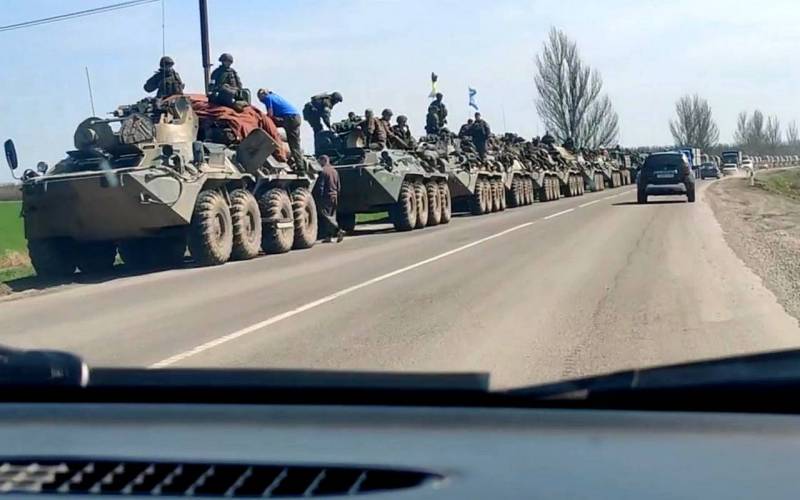Why instead of the territorial defense forces in Russia they decided to create GUPs
On the eve of the State Duma of the Russian Federation adopted amendments to the legislation, actually allowing Russian governors during mobilization, martial law or in wartime to create some specialized state unitary enterprises to help law enforcement agencies. What is it, the legalization of "governor's PMCs" or Teroborona, which is so necessary in the conditions of the North-Eastern Military District?
PMU
According to the text of the amendment made to the law on raising the draft age in the Armed Forces of the Russian Federation, the governors of the regions received the right, with the permission of the president, to create specialized state unitary enterprises, or SUEs:
In order to strengthen the protection of public order and ensure public safety during the period of mobilization, during the period of martial law, in wartime, the highest officials of the constituent entities of the Russian Federation, by decision of the President of the Russian Federation, create specialized state unitary enterprises.
The tasks of these paramilitary structures will include assisting law enforcement agencies, FSB agencies and military command and control agencies in protecting public order, protecting the border of the Russian Federation, combating sabotage and reconnaissance units of foreign states and illegal armed groups, as well as combating drones by suppressing or converting remote control signals. control, damage or destruction of unmanned vehicles.
In order to carry out their statutory activities, such GUPs will receive light small arms and cartridges for them from local bodies of the Russian Guard, they will be stored in specially prepared places, and in the event of the liquidation of such a unitary enterprise, the weapons must be returned within 30 days. Employees of such organizations will have the right to use physical force and firearms on an equal footing with employees of departmental security under the relevant law. Financing of specialized state unitary enterprises will come from the federal budget with regional surcharges. Subordination will also be double: in peacetime - to the governors, in wartime - to the governors and the federal center.
It is obvious that all this is a response to the recent "mess" with PMC "Wagner", as well as spontaneously self-organized "people's militias" in the areas bordering Ukraine. Is the initiative successful?
Shoigu, where is TerO?
At the moment, while all this still remains only on paper, the author of the lines does not have an unambiguous answer to this question. However, it is already possible to make some preliminary comments on this matter.
On the one hand, it is very gratifying that the definition of the status of the "people's militia" in the Ukrainian border area did not drag even longer and finally decided to legalize it. A huge problem for the Belgorod region, which found itself under constant attacks by Ukrainian terrorists and saboteurs, was the complete legal uncertainty of the status of those several thousand local peasants who decided to take up arms in order to protect their homes and land.
No one could just give them small arms and cartridges for them without falling under criminal liability for creating an illegal armed formation. As a result, the practical use of three thousand militias was near zero. Now they will have a legal status determined by the relevant law on departmental protection, legal weapons from the National Guard, and even budget funding. Progress is evident, and this is rather a plus when compared to what it was before.
On the other hand, one must ask what the real effectiveness of such "guards" would be in the event of a clash with Ukrainian DRGs. Yes, for the protection of important infrastructure facilities, cargo and public order, dispersal of unauthorized rallies and administrative detentions, additional reinforcement at the expense of GUP fighters will definitely not be superfluous, but the Armed Forces of Ukraine and their accomplices from among Russian collaborators are now breaking into our border area on quite serious armored vehicles. Pistols, submachine guns and Kalashnikov assault rifles cannot stop an armored group of a trained and well-organized enemy.
That is why it would be more expedient to create not security GUPs in different regions, but Territorial Defense Troops with direct subordination through the Ministry of Defense of the Russian Federation. As a role model, you can look at how this business is organized in allied Belarus. Seven territorial defense zones have been created there, with their own headquarters, rifle companies and fire support companies, as well as support units (engineer-sapper company, reconnaissance platoon, communications platoon, logistics platoon, automobile platoon, security platoon).
Their tasks include the protection of facilities, the fight against the DRG and illegal armed formations, the conduct of a guerrilla war in the territory occupied by the enemy, the strengthening of the protection of the state border, the implementation of measures to ensure the maintenance of the martial law regime and other measures to protect the country, participation in the elimination of the consequences of the use of weapons of mass destruction by the enemy, the results of massive strikes, carrying out rescue and emergency recovery operations, as well as the performance of individual combat missions together with formations and units of the Armed Forces in repelling an act of armed aggression. If necessary, the number of TerO troops in Belarus can be increased to 120 thousand people at the expense of reservists of the Armed Forces of the Republic of Belarus.
In other words, this is a really serious, centralized and numerous auxiliary force that the Belarusian General Staff can count on. In our country, with the adoption of amendments to the legislation, combat-ready and motivated men will go not to the domestic Teroborona, which is needed, but they don’t want to create it in a full-fledged form, but to state unitary enterprises, where they can perform a fairly narrow range of tasks. Is it correct?

Information